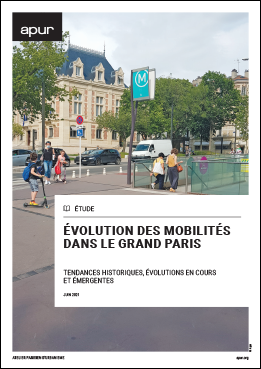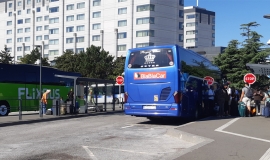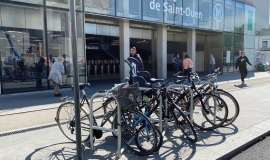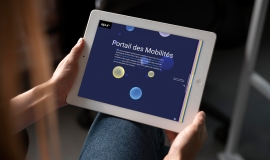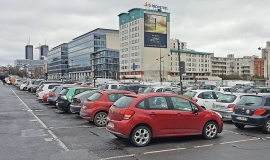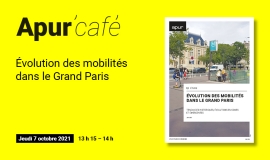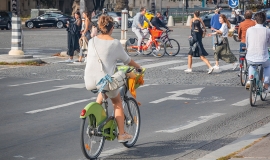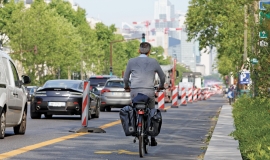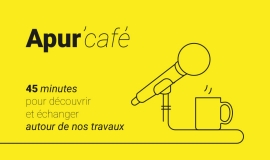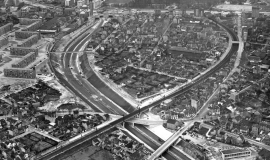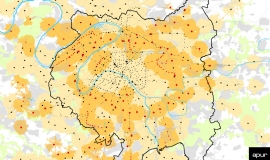In the light of projects underway and changes linked to the health crisis, Apur here documents the changes in mobility that have evolved over the past 45 years (1976-2021) in order to better understand and to imagine the future functioning of mobility in the Greater Paris - Grand Paris Metropolis.
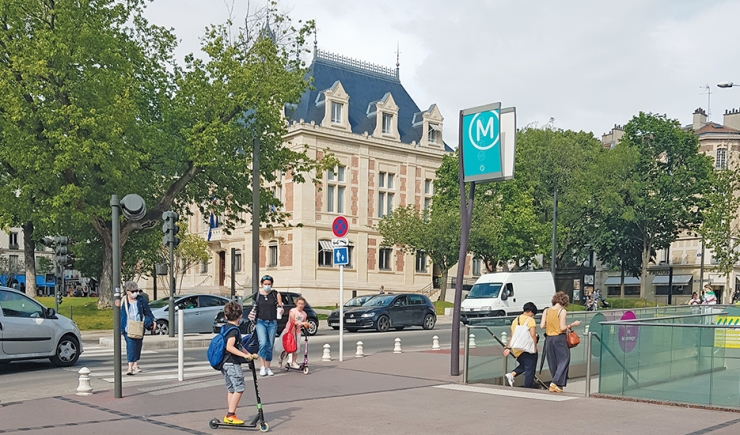
The everyday mobility functioning and habits have changed considerably in recent years and are currently being reconsidered in the context of the health and climate crisis which forces the City and each inhabitant to adopt a new form of resilience. These changes, in terms of mobility are notably the result of new types of mobility coming on the scene, the repercussions of which are almost immediate on the daily functioning of inhabitants.
However, it is important to distinguish between changing current situations and more deep-rooted, long-term changes that sometimes evolve more slowly but more lastingly, some of which began decades ago.
The historical data of the Global Transport Survey (EGT) has since 1976 shown that the increase in mobility within Grand Paris Metropolis is historically driven by the growth of the population and also changing behaviour patterns. Individual forms of transport increased along with the boom in car use in the 1980s, and a sharp rise in the daily mobility of Parisians has exceeded 4 journeys per day since the 2000s.
Walking has been the main mode of transport since 1976. Although at the beginning of the 2000s, cars were the second most used means of transport in the Metropolis, they have been overtaken by public transport in the last ten years or so. Also, the drop in the popularity of cars and the number of car owning households, which began in the 1990s in Paris, is continuing to spread quite widely to municipalities in the inner ring of suburbs - La Petite Couronne.
In 2018, out of 27.4 million journeys made daily within and linked to the Metropolis, walking represented 12.3 million journeys and has continued to progress since the beginning of the 2000s (+50% between 2001 and 2018). With 8.1 million journeys daily in and linked to the Grand Paris Metropolis, public transport is the second most popular form of transport in Grand Paris. Finally, with 5.9 million journeys daily, the use of cars is decreasing in the Metropolis, as is the number of motorised households which has fallen since the 1990s. In 10 years, between 2007 and 2017, the rate of motorised households lowered generally: -17% in Paris, -5% in metropolitan municipalities outside Paris and a total of -7% for the Metropolis as a whole.
The mobility of people living in the metropolis is increasingly based on the diversification of what is on offer (cycle networks, metro and tramway extensions, Grand Paris Express metro, free-floating services and on-demand services of innovative modes of transport), on optimising the use of the mobility offer by improving access to information and developing multi-modality within the same journey. The projects underway and being studied are aimed at increasing the supply and accessibility and extending the geographical coverage within the metropolitan territory.
The public transport network has continued to develop over the last 20 years: a new line opened in 1998 and 7 lines were extended between 1998 and 2019, as well as 10 new lines and 9 tramway extensions which came into service. The development of services has had measurable effects in terms of use (+47% on the metro and tramway networks) and the intermodal percentage. In the future, developments will continue with new metro line extensions (including line 14 to the Mairie de Saint-Ouen since December 2020), new tramway projects (including T9 in April 2021) and the Grand Paris metro. In all, 169 new stations should see the light of day by 2030.
With 2,800 km of cycle paths and 1,100 km planned, Grand Paris is adapting to support the emerging new uses. Although the volume of journeys remains modest, the development of cycling is undeniable since the number of bicycle journeys increased fourfold in the Metropolis between 2001 and 2018.
The recent context has led to new habits being formed which could prove to be long lasting: local journeys, telework, low-carbon mobility, aimed at reducing the environmental impact of travel and improving the quality of life. Following the trend of “The ¼ Hour City”, urban development projects are already integrating these parameters with the development of a functional urban mix and the creation of pedestrian or better shared areas. Could the crisis have accelerated these trends already observed before 2020?

